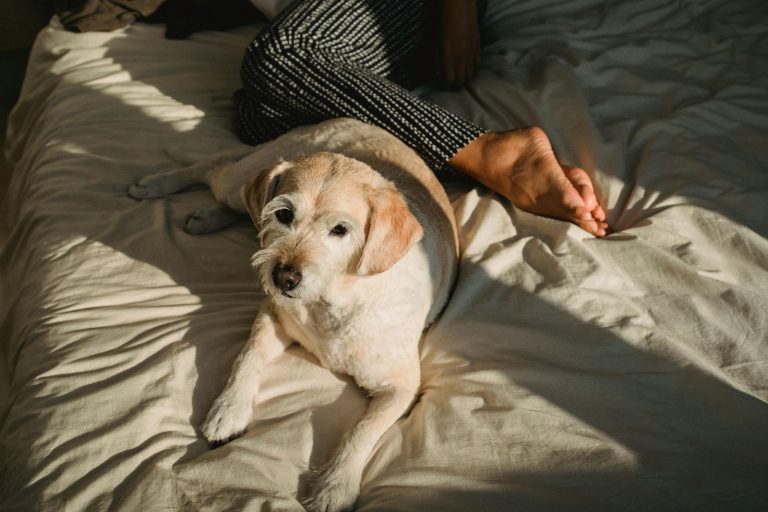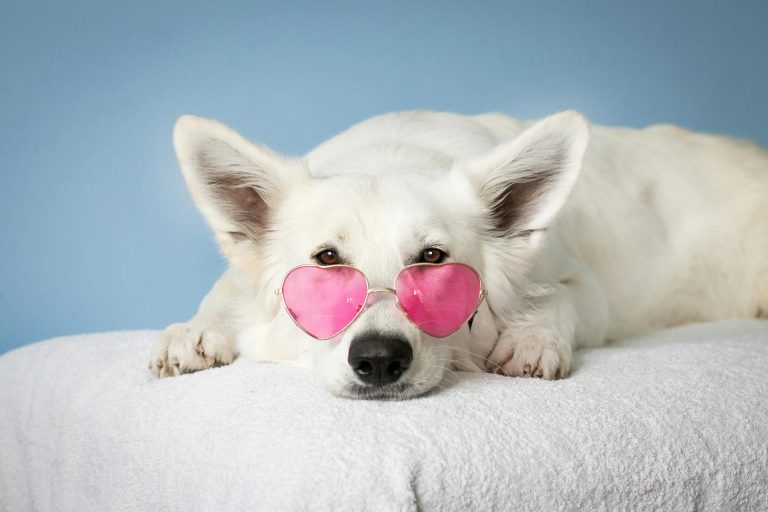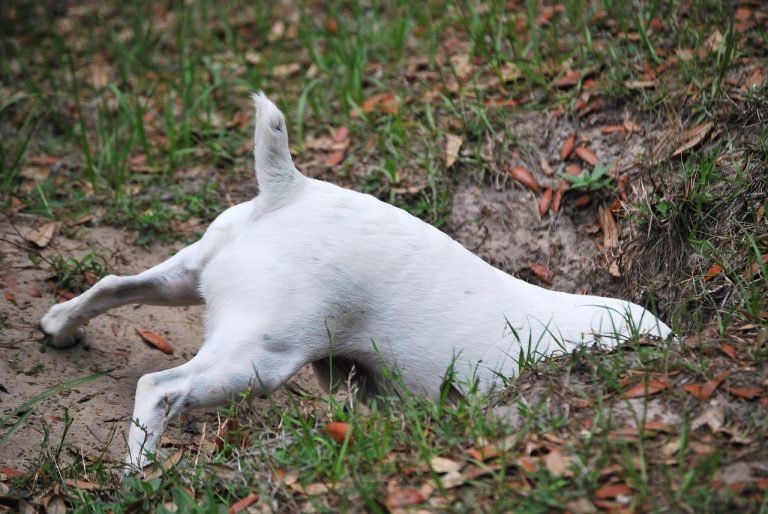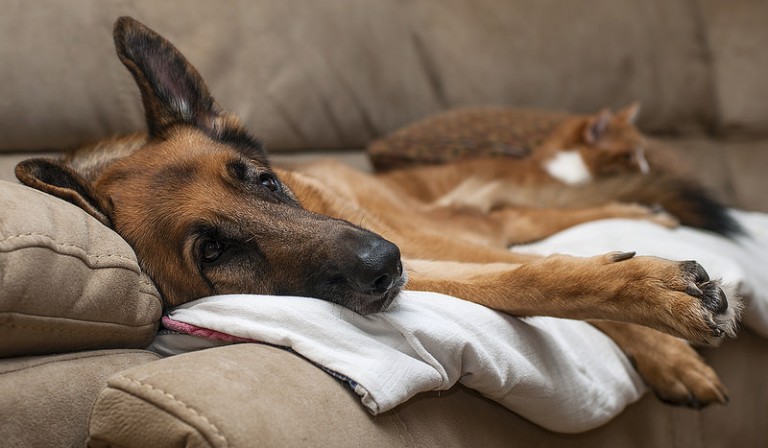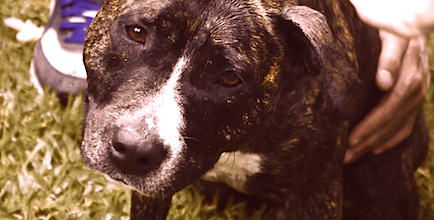Why Does My Dog Always Follow Me? Understanding Velcro Dogs
Wondering, “Why does my dog always follow me?” Explore the reasons and solutions for your dog’s Velcro-like behavior in this informative article.
This article was originally published in 2011 and is regularly updated. It was last reviewed and updated on July 29, 2024

- Why Does My Dog Always Follow Me? Mack’s Story
- Understanding Velcro Dogs
- Why Does My Dog Always Follow Me? Exploring the Reasons
- What You Can Do If Your Dog Keeps Following You — And It’s Bothering You
- Understanding Separation Anxiety in Dogs
- Best Way to Keep Your Dog Fit and Happy
- Final Thoughts
- References

Don’t leave your pet’s safety to chance
Sign up for Petful recall alerts today.

Why Does My Dog Always Follow Me? Mack’s Story
When I considered adopting my Border Collie, Mack, I asked if he was people-focused, as I wanted a loyal dog who would work with me. The rescue described Mack as a shadow who liked to stick close, which confirmed he was the right fit.
Mack’s strong focus on people came with challenges, particularly his lack of boundaries and independence. We worked on commands to help him gain independence.
Challenges with Velcro Dogs:
- Constant need for attention
- Lack of boundaries
- Difficulty being left alone
Over time, Mack learned to stay at home by himself, give me space when needed, and adjust to new places. He became my trail dog, lounge buddy, and vigilant family guardian.
For more on Border Collies, check out our Border Collie breed profile.
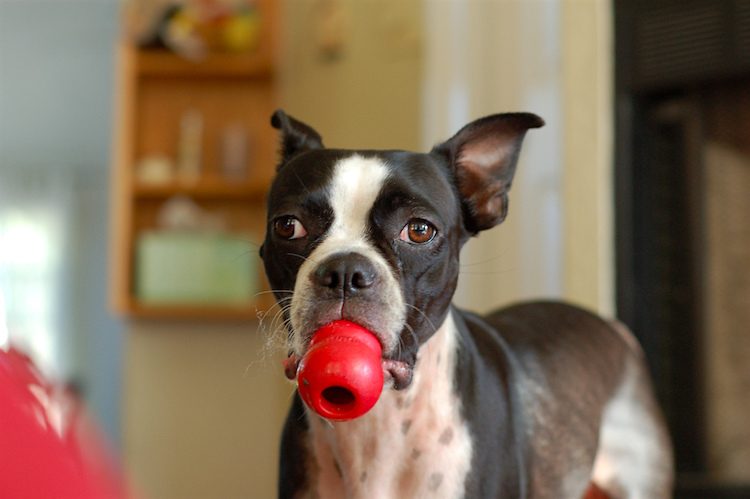
Understanding Velcro Dogs
Has your dog ever been called a Velcro dog or your shadow? These are dogs who follow their owners closely, often sticking so close that they mimic your movements like a shadow.
While having your pup tag along can be endearing, it can become a problem when:
- They follow you into the bathroom
- They enter the baby’s room at night
- They are so underfoot that you worry about tripping over them
This behavior can be particularly concerning when it’s rooted in anxiety or behavioral problems.
For more insights, check out our articles on Velcro dogs and dogs acting like your shadow.
Why Does My Dog Always Follow Me? Exploring the Reasons
Dogs follow us for various reasons, ranging from normal behavior to underlying issues. Here are 5 possible reasons your dog keeps following you around:
- Puppy Development
- Puppies naturally follow their owners for security, learning, and enjoyment.
- It’s essential to socialize puppies to the world around them.
- During puppyhood, they need to learn to be alone to prevent separation anxiety as adults.
- Genetics
- Some breeds are genetically predisposed to follow their owners closely, often due to jobs that require close human interaction.
- These breeds might need extra help learning independence to prevent anxiety later.
- Anxiety
- Anxiety can cause dogs to follow their owners constantly. This behavior indicates a greater issue, and the dog may need confidence-building and independence training.
- Relationship
- Some dogs follow because they associate their owners with positive experiences, such as play, food, or affection. This behavior is common in social animals like dogs.
- Habit
- Dogs can develop the habit of following closely if they haven’t been trained otherwise. This is often due to rewards like physical affection or treats.
Understanding these reasons can help you determine if your dog’s behavior is normal or if intervention is needed. For more information, check out how to keep your dog entertained while you’re at work.

What You Can Do If Your Dog Keeps Following You — And It’s Bothering You
If your dog constantly follows you, a bit of structure and independence training can be beneficial. Even secure dogs can benefit from training to ensure they give you space.
Reasons to Train Your Dog to Follow Less:
- Safety concerns, like tripping over them
- Need for personal space
- Reducing their anxiety and dependence
The following commands and methods are helpful for managing a dog who always follows:
- Place
- The “Place” command teaches your dog to stay in a designated area, like a bed or mat. This command is useful for giving them a spot to stay while you move around.
- Out
- The “Out” command means to leave the area. It’s great for teaching dogs to respect personal space and not to follow too closely.
- Down-Stay
- The “Down-Stay” command helps with socialization, teaching manners, and managing impulse control. It’s also effective for managing a dog’s need to follow you constantly.
- Crate Training
- Crate training can be essential for puppies, dogs with separation anxiety, and those with destructive chewing habits. It provides a safe space and teaches independence.
- Arrive and Depart Calmly
- Making arrivals and departures uneventful helps prevent dogs from becoming overly excited or anxious. It teaches them that your comings and goings are routine and nothing to be stressed about.
- Set Boundaries
- Clear boundaries help dogs understand their limits, which is particularly important for those with anxiety or behavior issues.
Each of these techniques can help manage your dog’s behavior and ensure they aren’t constantly underfoot. For additional insights on handling common issues like resource guarding or destructive chewing, check out the links provided.
Here are a few more reasons a dog follows you everywhere:
Understanding Separation Anxiety in Dogs
Separation anxiety is a common reason many pet owners ask, “Why does my dog always follow me?” This condition occurs when dogs become anxious or distressed when separated from their owners. It’s often seen in dogs who have developed a strong attachment to their human family members
Signs of separation anxiety include:
- Excessive barking or howling
- Destructive behavior, such as chewing furniture or digging at doors
- House soiling, even if the dog is house-trained
Understanding and managing separation anxiety is crucial. Techniques like gradual desensitization, creating a safe and comfortable space for the dog, and providing mental stimulation can help alleviate the symptoms. It’s also important to avoid dramatic departures or arrivals, which can heighten the dog’s anxiety.
Best Way to Keep Your Dog Fit and Happy
Looking for a way for you and your dog to get healthy together? Check out the FitBark 2, the highest-rated dog health monitor on the market. This small, colorful device attaches to your dog’s collar and monitors:
- Activity levels
- Quality of sleep
- Distance traveled
- Calories burned
- Overall health and behavior 24/7
With an impressive battery life of 6 months, you can focus more on bonding with your pup and less on recharging. FitBark 2 fits dogs of any size and is water-friendly, making it perfect for active pups.
Final Thoughts
Having a dog who wants to be with you and pays attention to you can be wonderful. By teaching your dog a healthy level of independence and setting boundaries, you can enjoy the positive traits of a “Velcro dog” while encouraging calmness and reducing anxiety.
Incorporating tools like the FitBark 2, which tracks your dog’s activity and overall health, can also be beneficial. It helps you monitor your dog’s well-being and ensures they get the right amount of exercise, contributing to a balanced and happy lifestyle.
This balance ensures your dog isn’t constantly underfoot, preventing potential tripping hazards, especially during nighttime trips to the baby’s room. A well-adjusted dog is happier and more confident, making life better for both you and your furry friend.
References
- Camacho, Fernando. A Better Life With Your Dog: Understanding and Improving the Way You and Your Dog Live Together. Dog Ear Publishing. 2009 70–73. https://books.google.com/books?id=6PM6d2XmSp4C&pg=PA70#v=onepage&q&f=false.
- Brevitz, Betsy. The Complete Healthy Dog Handbook: The Definitive Guide to Keeping Your Pet Happy, Healthy & Active. Workman Publishing. 2009. 179–181. https://books.google.com/books?id=DA8Nb56R3qsC&pg=PA179#v=onepage&q&f=false.
- Anastasio, Alexandra. “Why Does My Dog Follow Me Everywhere?” American Kennel Club. May 3, 2018. https://www.akc.org/expert-advice/advice/why-does-my-dog-follow-me-everywhere/.
- “Why Is My Dog Digging?” American Kennel Club. https://www.akc.org/expert-advice/advice/why-is-my-dog-digging/


